With factories in turmoil and sliding to oblivion, the ACU had to look elsewhere for ISDT team bikes… enter the Cheney Triumph.
Words and pics: Tim Britton
Sometimes the best looking motorcycles are created by accident or necessity rather than by design.
For instance had the McCandless brothers not felt Norton’s post World War Two trials bike was a bit unwieldy and set about creating their own from Norton parts, then the 500T would not have seen the light of day.
Road enthusiasts can point a finger at Eddie Dow’s conversion of a BSA A10 to Goldiesque style which forced BSA’s hand to produce the Rocket Gold Star.
In the same way a need for ISDT success and the lack of a suitable standard product led to the introduction of the Cheney Triumph and created an ISDT legend, replicas of which are highly sought after.
In 1970 the rules for the ISDT changed to reflect the turmoil in the motorcycle industry worldwide.
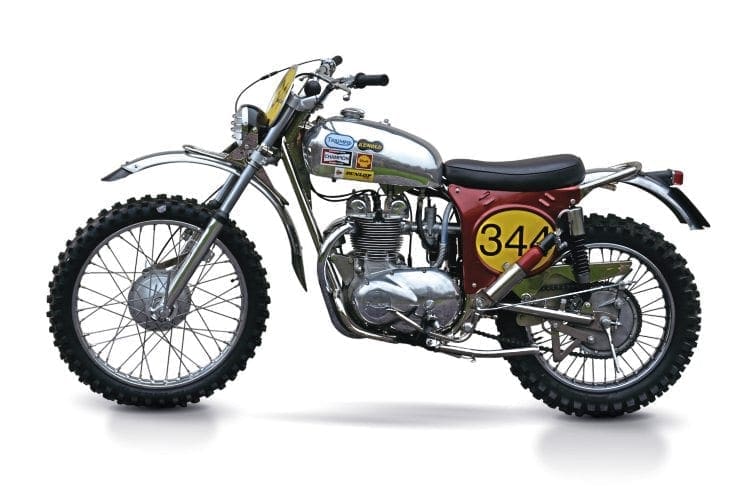
Since its inception in 1913 the International Six Days Trial had included a Trophy and a Silver Vase competition within its framework.
The Trophy was the premier contest with participants mounted on machines made in their home country.
The Silver Vase contest allowed riders to use any machine. As the worldwide industry was shrinking, this meant the Trophy contest had fewer and fewer eligible teams and the Silver Vase was being seen as the more desirable contest.
So to counteract this, both contests were thrown open to national teams mounted on any make of machine.
However, the Triumph unit twin engine had a good reputation in the ISDT – fast, flexible and reliable – all it needed was to be mounted in a more suitable frame than the stock Triumph one.

The MX world had been using after-market frames for years and Eric Cheney’s chassis had a good reputation. With BSA/Triumph unwilling or unable to supply complete bikes the answer was to fit a twin engine into Cheney’s frame.
However, it was not to be quite that simple as outside factors conspired to delay the construction of the bikes.
The biggest of these problems involved a strike at the Dunlop factory which held up the supply of the correct high tensile steel rims. In the end a wheel building specialist came to the rescue and sourced enough rims from his own stock to complete the job.
Cheney and his team worked flat out the weekend before the Welsh Two-day Trial so the team members could test their machines.
The bikes themselves bristled with the special requirements of an ISDT rider and a lot of thought had gone in to their construction.
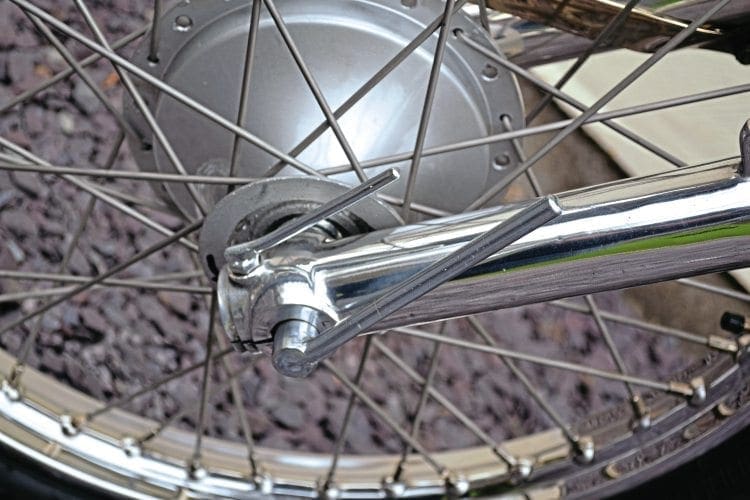


Starting with the Cheney oil-bearing frame, a centre stand had been added so wheel changing was easier and rock guards added to protect the engine. Cheney’s front forks were used and his own Elektron front hub too, while at the rear was BSA’s crinkle hub – a long time favourite for such machines.
Internally the engine was to Triumph’s Daytona specification but with a lower first gear ratio.
In their feature on the machines in 1970 MotorCycle revealed all machines for the Welsh would be 490cc but after the event two would be enlarged to 504cc for use in the 750cc class and all bikes would have their compression ratio lowered to 8:1 from 9.5:1 as it was felt the fuel available in Spain where the ISDT was to be held would likely be of a lower octane than UK petrol.
Finishing off the machines were a smart two gallon alloy petrol tank and alloy side panels covering the light alloy airbox beneath one of Britax’s seats.
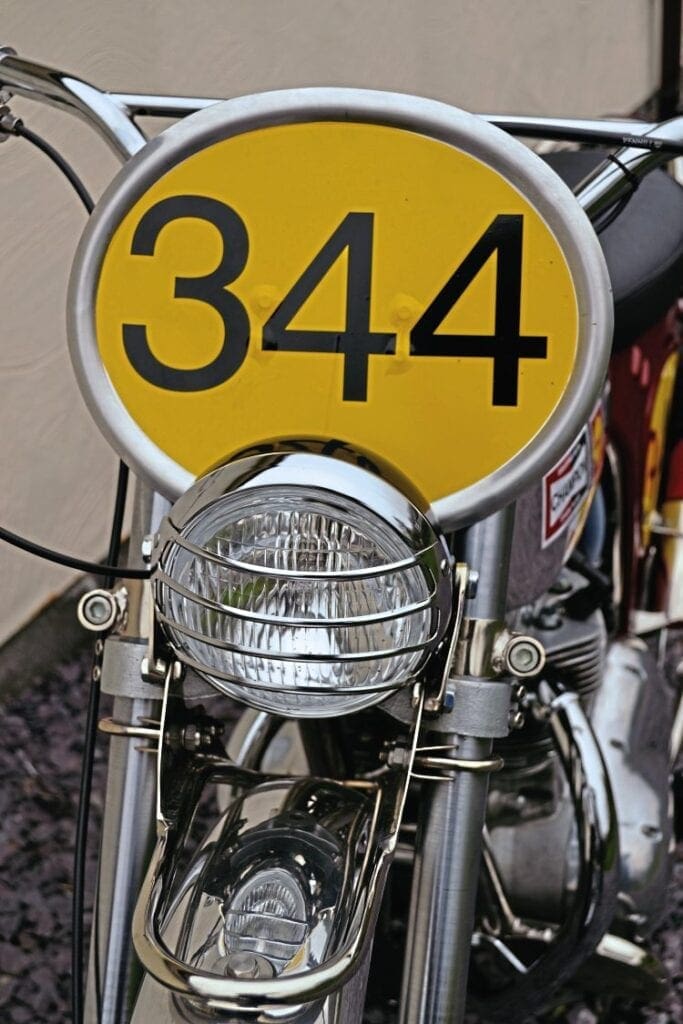
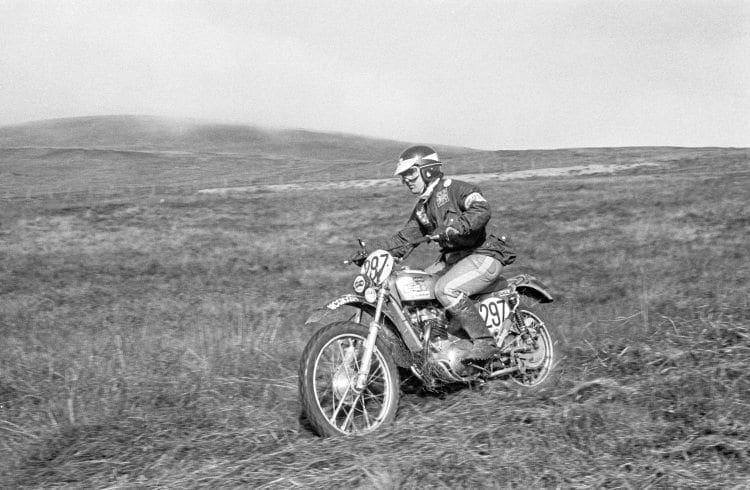
These side panels were anodised red and contributed greatly to the look of the bike.
These superb looking machines were to serve the UK teams for two years and competed in the 1970 ISDT featured in the film ‘On Any Sunday’ as well as the following year’s Manx event.
After that they were sold off and their riders moved on.
This particular one WCG102H, which had been one of the over-bored bikes and issued to Jim Sandiford, surfaced at a Bonhams’ auction in 2011 and had been partially restored. Bryn Richards – a ‘MAN’ truck dealer with a history of enduro and competition riding – acquired the bike from the auction and with little free time of his own commissioned Steve Tonkin to restore it.

Bryn’s instructions to Steve were fairly simple, the bike had to retain its integrity so parts were repaired or original style sourced rather than modernised. Biggest problem was the frame, as at some time it had been chromed rather than nickelled and this isn’t the easiest of stuff to remove.
Or rather it is but the process can attack the brazing process the frame is put together with. Bryn was well aware of this and reports the brazing is intact.
Also replaced were the alloy rims the bike wore, the original would have steel so that’s what Bryn wanted. Inside the engine there’d been very little wear except for the valve guides which were loose in the head.
A couple of gears were replaced as a precaution, new bearings were used and the engine got a set of rings too. Other than a new set of handlebars to original pattern, cables, chain and sprockets there was little else needed to bring the bike back to pristine.
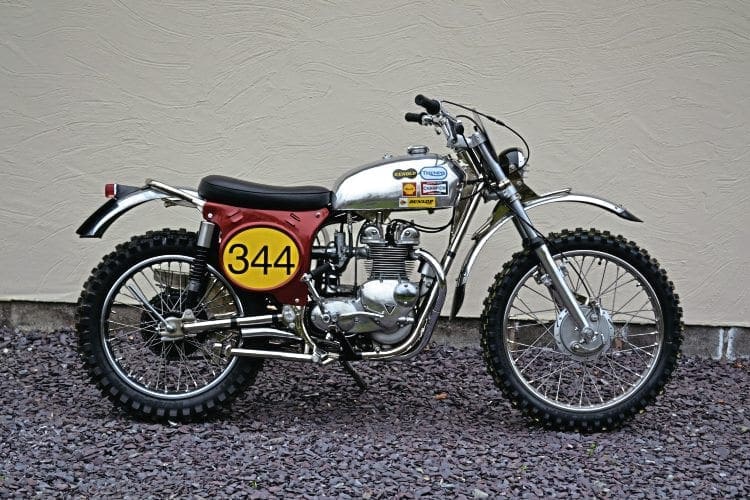
Does it run? Yes, and it took three kicks to fire it up and it settled down to a steady beat with a throaty, rather than loud, rumble from the twisty exhaust system.
James Albert Sandiford
One of the UK’s top off-road stars in the Sixties and Seventies, Jim Sandiford was associated with BSA and Greeves as part of their works teams then when the Spanish Armada conquered the British trials scene he turned his attention to Montesa.

Thanks to Jim the marque enjoyed incredible success in the UK and his liaison with the factory was legendary. His Lancashire dealership was the base for the factory riders when they were in the UK and his own supported riders through Jim Sandiford Motorcycles.
The ISDT seemed to suit Sandiford’s temperament and he quietly amassed a load of gold medals in this tough competition. Our picture of him in action on WCG102H was taken by Nick Nicholls during the 1971 Manx ISDT.


The Nick Nicholls Collection is part of Mortons Archive see more at: www.mortonsarchive.com
Read more News and Features online at www.classicdirtbike.com and in the latest issue of Classic Dirt Bike – on sale now!




